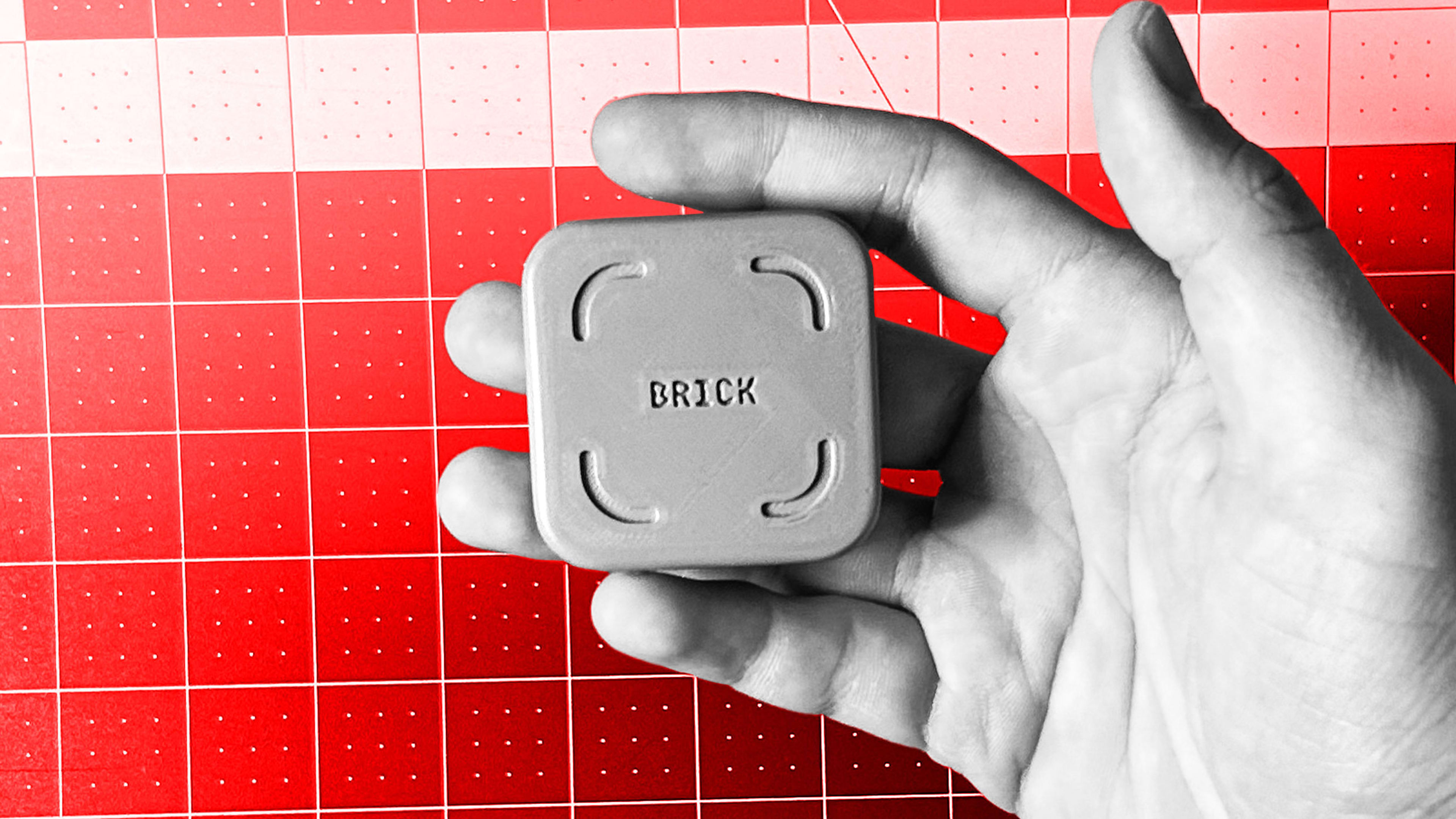TJ Driver, 23, is starting a company to help people have better relationships with their smartphones. Driver always knew he wanted to start his own company. After graduating from University of Wisconsin-Madison, he got a job at a small software company where he planned to learn the ropes. Between the long commute and the burning sense that he wanted to do more with his life, Driver left to found Brick with his best friend, Zach Nasgowitz.
Brick is gray square, approximately 2 by 2 inches, that pairs with a user’s phone. Users can choose which apps they want to block and which ones they want to keep running, and then tap the Brick to lock the apps they’ve selected. In order to unblock the application, users have to tap the Brick again. The idea is that you would keep your Brick in a separate location from your phone most of the time, thereby making access to all of your locked apps much less convenient.
Brick is currently waiting for app approval from the Apple store, and Driver and Nasgowitz plan to launch an Android version in a few months. With an intended price point of $49, the product has not officially been released, but Driver says a few hundred people have already signed up for early access.

Driver chatted with Fast Company about what a healthy relationship with smartphones looks like and why he wanted to start Brick. For Driver, Brick comes from a deeply personal place of wanting to be more intentional, and wanting to help others be more intentional about their media use and, ultimately, how they spend their precious time on this planet.
Fast Company: Why Brick?
TJ Driver: I started off by using Apple Screen Time limits but realized I needed a stricter solution. It was easy to click the “ignore” button or bypass it. I thought about getting a flip phone, which sounded good in theory but wasn’t that plausible once I started looking into it. Smartphones have important uses for work and daily life, such as pulling up my ticket when I’m taking the train to work, getting an Uber, looking up directions, paying someone, Googling something. It’s hard to give up all of it. I realized we needed a middle ground that’s more strict than Apple Screen Time but not as strict as a flip phone. We settled on Brick because you can leave it at home, which removes the temptation to unlock apps.
FC: What happens if there’s an emergency but you left your Brick at home?
TJD: That’s the biggest conversation we’re having. The separate device is not easy to bypass but accidents happen; people lose their Bricks. At the moment, the solution is if you delete your Brick app, everything will be unblocked but you’ll lose all your data, such as stats on the daily average you’re trying to beat every day. We’re still working with early testers to figure out the perfect balance between maintaining the commitment to blocking the apps versus an emergency.
FC: What do you see as the impact of smartphones and social media on Gen Z?
TJD: A lot of people are quick to point out the drastic negative effects of smartphones and social media—for example, all the data we’ve seen around how Instagram is bad for your mental health. That’s important and valid. However, I think there’s another question we need to ask, which is: What is the phone displacing? That was key for me. Every day we miss out on doing cool and fun things because the ultimate boredom killer is in our pocket. Maybe if I was standing in line at Starbucks, I would have talked to a stranger if I’d looked up from my phone. Maybe if I wasn’t sitting at home scrolling through TikTok, I would be reading a good book or talking to my parents. Phones make it so easy to not meet up with friends or go to the library.
FC: What would you say a healthy relationship with social media looks like? Is that even possible?
TJD: I think we can have healthy relationships with social media as long as we keep it in moderation—but social media is designed to be addictive instead of fostering conscious intentional use. There’s so much entertaining content, it’s easy to keep scrolling. I love the internet of the 1990s: You boot up the computer and, as soon as you walk away, you aren’t online anymore. That’s how I use Brick personally. I leave everything blocked until 6:30 p.m. I check Instagram, I go on for 30 minutes, see what a friend posted, catch up on sports highlights, and then I’m done. I get Brick and block it again so I’m not getting notifications and I’m not checking it when I don’t intend to.
I’ve noticed that I’ve started to appreciate the real world more. I’ve always liked to read but now I’m reading more; I go on walks instead of sitting on the couch. I’m going to dinner with my friends and having conversations I wouldn’t normally have. I’m also more productive. The killer for productivity wasn’t the temptation to scroll. It was the constant notifications when I’d be deep [into] coding or writing an article. Brick has helped me appreciate my daily life and be a lot more focused when I work.
Recognize your brand’s excellence by applying to this year’s Brands That Matter Awards before the final deadline, June 7.
Sign up for Brands That Matter notifications here.
